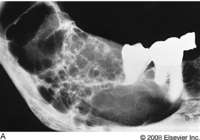Bailey's Chapter 112 - Odontogenic Cysts Tumors
- NBME
- USMLE
- ABOMS
2.
You may optionally provide this to label your report, leaderboard, or certificate.
Submit
Submit
×
Thank you for your feedback!
















